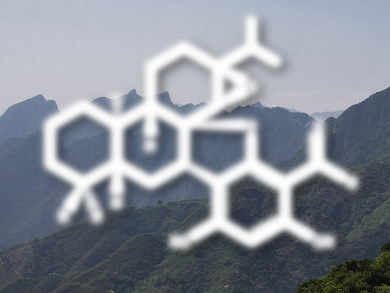From Remote Chinese Mountain Regions to the Lab
Chloranthus oldhamii Solms-Laubach is a seemingly nondescript plant. It nestles in damp and shadowy patches on the remote mountainsides of China, rarely seen, barely touched by human hands. Yet its taxonomical cousins, of which there are a mere two dozen or so around the world, have yielded some intriguing natural products. The plants’ secondary metabolites encompass mono- and di-sesquiterpenoids.
But many a hidden talent is veiled in modesty and a team from the School of Pharmacy, at Fudan University in Shanghai, the Shanghai Institute of Materia Medica, part of the Chinese Academy of Sciences, and the Institute of Bioengineering and Nanotechnology, in Singapore, have gone back to the ancient Chinese Jinggang Mountains, in Jiangxi Province, and examined the plant closely with the tools of modern analytical chemistry.
Jin-Feng Hu and colleagues report an entirely novel group of compounds – chlorabietols – from C. oldhamii Solms-Laub. that have a quite unique and previously unseen chemical skeleton: an adduct of phloroglucinol and a diterpene. The three primary compounds, chlorabietols A, B, and C all essentially comprise an abietane-type diterpenoid coupled with different alkenyl phloroglucinol units that together endow each of them with a central 2,3-dihydrofuran ring. The structures were obtained by spectroscopic analysis (infrared, ultraviolet, NMR, and mass spectrometry), molecular modeling studies, and electronic circular dichroism (CD) calculations.
“There is an urgent need to investigate the rare and endangered plant species endemic to China,” Hu told ChemViews Magazine. “We would like to launch a new era to systematically identify natural products from plants in the China Plant Red Data Book,” he adds. The book lists rare and endangered plants. Hu’s group and collaborators are conducting individual projects related to this overall research goal.
Potential Therapeutic Applications
Novel chemical skeletons are always of interest to medicinal chemists, as such entities offer the possibility of screening for various types of physiological activity and adding new areas of potential fruitful investigation to the diversity of chemical space. Hu and colleagues carried out a range of assays on their samples of the chlorabietols A, B, and C and demonstrated a rather useful activity.
The three chlorabietols, it seems, have activity as molecular inhibitors of the protein tyrosine phosphatase 1B, also known as tyrosine-protein phosphatase non-receptor type 1. The enzyme is the archetype of the protein tyrosine phosphatase (PTP) family. It was first extracted and identified in placenta, but is expressed by its gene PTPN1 in a wide range of tissues. Indeed, the enzyme is a negative regulator of the insulin signaling pathway.
As such many researchers see it as a promising therapeutic target for a new type of pharmaceutical to treat type 2 diabetes. In addition, disturbances in this protein’s normal activity have also been associated with unwanted cell proliferation and the development of breast cancer. Inhibitory activity of A, B, and C is detailed in their IC50 values of 12.6, 5.3, and 4.9 micromolar, respectively.
Interesting Biosynthesis
“In my view the structures are very interesting”, David Kingston of Virgina Tech, Blacksburg, VA, USA, told ChemViews Magazine, “and to my knowledge are the first compounds combining the diterpene and phloroglucinol structures via a tetrahydrofuran ring junction.” He adds that, “A search of SciFinder found no compounds even remotely similar to the chlorabietols.”
However, Kingstons is less excited about the bioactivity of these novel compounds. He points out that “although the target is novel, the potency is quite low. For clinical use potencies of 1–10 nanomolar would be necessary, and it is not obvious how these potencies could be achieved.”
That said, the biosynthesis could be of interest from the mechanistic perspective. “My guess is that some sort of nucleophilic attack by the electron-rich phloroglucinol benzene ring on a diepoxide is likely to be the first step, followed by tetrahydrofuran ring formation”, Kingston explains.
- Chlorabietols A–C, Phloroglucinol-Diterpene Adducts from the Chloranthaceae Plant Chloranthus oldhamii,
Juan Xiong, Zhi-Lai Hong, Li-Xin Gao, Jie Shen, Shu-Ting Liu, Guo-Xun Yang, Jia Li, Huaqiang Zeng, Jin-Feng Hu,
J. Org. Chem. 2015.
DOI: 10.1021/acs.joc.5b01658




